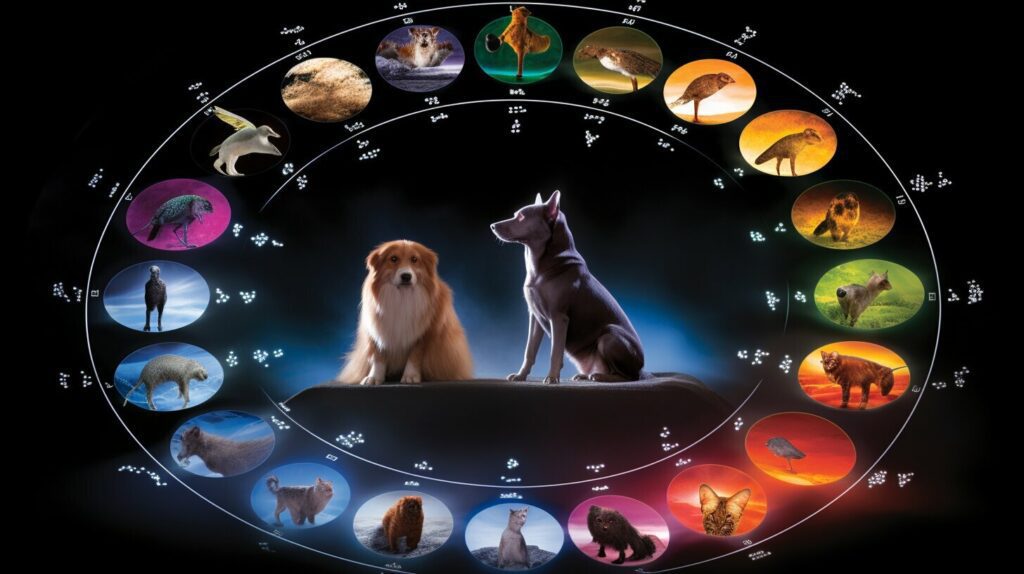Animal-Assisted Therapy
Imagine yourself in a serene environment, filled with the gentle purring of cats, the calming presence of dogs, and the playful chirping of birds. That’s the magic of Animal-Assisted Therapy (AAT) for you! This article shines the spotlight on the splendid advantages and innovative strategies of AAT. From reducing anxiety to promoting social interaction and even boosting physical health, there’s so much that therapy pets can do! Not only that, but it also shares some incredible techniques that make the process more effective and rewarding. So, put your feet up, and let’s learn more about this wonderful approach to healing and wellness.

Understanding Animal-Assisted Therapy
Understanding animal-assisted therapy may feel complex at first, but when broken down, it is comprehensible. Animal-assisted therapy, at its very core, involves using animals as part of a therapeutic practice to bring comfort, aid mental health, and enhance physical abilities of individuals.
Definition of animal-assisted therapy
Animal-assisted therapy is a type of treatment that includes animals as a form of therapeutic intervention to promote the emotional and physical health of individuals. It can involve a wide range of animals, including dogs, cats, horses, and even dolphins, doing everything from providing companionship to helping with physical rehabilitation.
History and evolution of animal-assisted therapy
Animal-assisted therapy exists in some form for centuries. Dogs were often used as companions for isolated or emotionally distressed individuals. Over time, the therapy started including different types of animals, and formalised methods evolved from these practices, leading to the modern system we’re familiar with today.
Differences between animal-assisted therapy and other forms of therapy
While most traditional forms of therapy rely on direct human interaction and verbal communication, animal-assisted therapy involves an animal as a central part of the therapy process. This introduces a different way of communication and interaction, which can be particularly beneficial for those who struggle in conventional therapy programs.
Types of Animal-Assisted Therapy
There are many different types of animal-assisted therapy, each with their own unique benefits. Let’s take a closer look at some of these.
Pet therapy
Pet therapy, predominantly involving dogs and cats, assists people suffering from stress, anxiety, or loneliness. Animals, with their unconditional love and non-threatening presence, can help generate feelings of comfort and safety.
Equine therapy
Equine therapy involves the use of horses to promote emotional growth. Individuals ride and care for horses, enhancing their physical coordination, balance and flexibility. It can also help them build confidence and self-esteem.
Dolphin therapy
Dolphin therapy might sound a bit unique, but the intelligence and social behaviour of these marine animals make a powerful therapeutic tool, especially amongst children with disabilities. The dolphin-human interaction can improve physical and mental activity.
Other types of animal therapy
There are various other types of animal therapy where different species are used based on the patient’s preference or therapeutic requirements. These could include birds, rabbits, fish or farm animals.

Roles of Animals in Therapy
Animals play a number of roles in therapy, each of them crucial to the therapeutic process.
Stress reduction and calmness
The presence of animals can have a significant calming effect. Animals give unconditional love and acceptance, which helps to reduce emotional stress and feelings of anxiety.
Bridging communication gaps
Animals can also serve as catalysts in the therapeutic process, especially for individuals who have difficulty opening up to human therapists. The interaction with animals help in expressing emotions, without the fear of judgement or criticism.
Enhancing physical movement and coordination
Animals can help in enhancing physical coordination and movement. From walking a dog to grooming a horse, these activities help improve motor skills and physical well-being.
Selection and Training of Animals for Therapy
Not every animal makes an appropriate therapy animal. Certain characteristics and training are required.
Criteria for selecting animals
Typically, animals chosen for therapy are friendly, comfortable with strangers, and calm in various situations. They also need to be tolerant of occasional rough handling, loud noises, and unfamiliar surroundings.
Training process for animals
After selection, animals are put through a rigorous training process. This involves learning to obey commands, staying calm around medical equipment, and reacting appropriately to a variety of human emotions.
Certification and standards
Finally, therapy animals need to comply with certain certifications and standards. These ensure that the animals can safely and effectively participate in the therapy sessions.
Benefits of Animal-Assisted Therapy
Animal-assisted therapy has a wide range of emotional, mental, physical, social, and learning benefits.
Emotional and mental health benefits
Animals can help individuals develop emotional coping mechanism. Their presence can reduce feelings of tension and improve mood.
Physical health benefits
Involvement with animals, like walking dogs or grooming horses, can help with improving physical skills like balance, motor coordination and strength.
Benefits for development and learning
For children, interacting with animals can enhance learning abilities. This is particularly true for children with developmental challenges or disabilities.
Social and interpersonal benefits
Animals, with their non-judgemental nature, can be a positive force in social situations. They can help individuals develop more constructive interactions and build relationships.
Implementing Animal-Assisted Therapy
Understanding patient’s needs
To implement animal-assisted therapy effectively, it starts with understanding the patient’s needs. This allows the therapist to tailor the treatment by selecting the appropriate animal and type of interaction.
Identifying suitable animals
Based on the patient’s needs, certain animals may be more suitable than others. For example, an individual lacking physical strength might benefit more from pet therapy with a dog, while an individual with severe depression might respond better to equine therapy.
Setting up a stable therapy process
After understanding the patient’s needs and choosing the appropriate animal, a stable therapy process must be established. This can involve setting up a regular schedule, defining clear goals and tracking progress over time.
The Science Behind Animal-Assisted Therapy
Current research on animal-assisted therapy
Research on animal-assisted therapy has demonstrated various physiological changes in patients, such as reduced blood pressure and stress hormones. These findings support the use of animals in therapy programs.
Physiological changes during sessions
During sessions, patients often exhibit lowered heart rates and stress hormone levels. Animals have also been found to promote the release of endorphins, which help in promoting a sense of well-being.
Long-term effects and outcomes
Long term effects of this therapy are promising. Regular sessions have been linked with improved self-esteem, social skills and behavioural responses in many individuals.
Risks and Limitations of Animal-Assisted Therapy
Potential risks
While animal-assisted therapy can be beneficial, there can be potential risks. These include allergies, fear of animals, and the potential for animal-borne diseases.
Contraindications and precautions
Therapy animals are carefully selected and trained to minimise risk, but some clients might still be unsuitable for this therapy due to severe allergies, phobias, or compromised immune systems.
Overcoming limitations
With appropriate measures, many of these limitations can be overcome. For instance, choosing hypoallergenic animals can reduce allergy risks, while thorough animal health checks can help prevent disease transmission.
Case Studies and Success Stories
Animal-assisted therapy has many success stories, from helping individuals cope with mental health issues to aiding physical rehabilitation.
Cases of successful animal-assisted therapy
There are countless instances where animal-assisted therapy has significantly improved the quality of life for individuals with a wide variety of conditions.
Analyses of successful treatments
Successful treatments often involve substantial changes in emotional, mental and physical aspects of a patient’s life. This could range from overcoming social anxiety to improved physical mobility.
Long-term impact of therapy
The long-term impact of animal-assisted therapy often goes beyond the duration of the therapy sessions themselves. Many individuals carry the positive impact with them, helping in dealing with future challenges.
Future Prospects of Animal-Assisted Therapy
Developments in animal-assisted therapy
As research continues to uncover the benefits of animal-assisted therapy, we can expect the field to develop even further and help even more people.
Expanding roles of animals in therapy
The roles animals play in therapy are continuously evolving. Looking to the future, we can expect the therapeutic use of a wider variety of animals and innovative therapy techniques.
Potential future challenges and strategies
Every evolving field faces challenges and animal-assisted therapy is no different. Allergies, animal welfare considerations, and ensuring consistency in training standards are some potential obstacles. However, with new strategies and research, these challenges can be mitigated. The proven benefits of animal-assisted therapy certainly outweigh the challenges, promising a bright future for this therapeutic modality.
Animal-Assisted Therapy
For those interested in Animal-Assisted Therapy (AAT), here are three authoritative and comprehensive websites that offer a wealth of information, resources, and engagement opportunities in this field:
-
American Association of Animal-Assisted Therapy (AAAT)
- AAAT is dedicated to the support and advancement of therapy animals and AAT services. The website provides resources for finding therapy teams, AAT trainers, and adoptable therapy animals. It also offers information on how to become a member and support their initiatives, alongside educational content on AAT’s impact and methodologies.
- URL: https://aatherapy.org/ (AAAAT).
-
PositivePsychology.com – Animal Therapy Explained
- This platform offers a deep dive into the principles and practices of Animal-Assisted Therapy, including the psychological basis and benefits of AAT. It recommends books and certifications for professionals looking to integrate AAT into their practice, covering various aspects from the foundational theories to practical implementation and the diverse ways animals can contribute to therapeutic processes.
- URL: https://positivepsychology.com/ (PositivePsychology.com).
-
Therapet – Animal Assisted Therapy
- Therapet is a non-profit organization that provides both Animal Assisted Therapy (AAT) and Animal Assisted Activities (AAA) with a team of over 70 dogs, 3 cats, and a cockatoo. Their website outlines their mission, services, and the extensive benefits of AAT. It also provides information on how to get involved, either through donations, volunteering, or participating in their events and training programs.
- URL: https://therapet.org/ (TheraPet).
These websites serve as excellent starting points for anyone looking to learn more about AAT, whether you’re a professional looking to incorporate it into your practice, someone interested in volunteering, or if you’re simply seeking more information on the benefits and methodologies of animal-assisted therapies.
